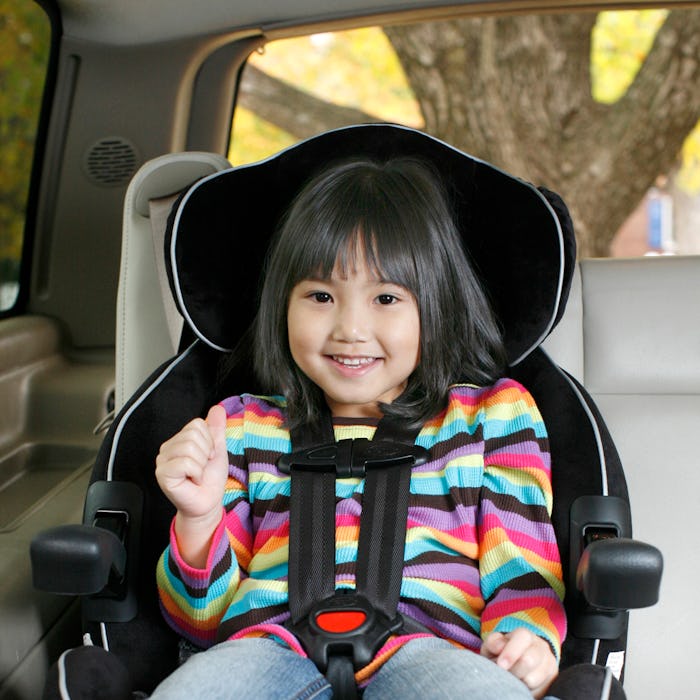Life

How Car Seat Rules Change By Age
Hitting the road with your kid is a lot of fun, but keeping your tiny passenger safe during those car trips takes some effort. Knowing how car seat rules change by age can ensure your baby has pleasant journeys ahead. In general, keeping your kid in a car seat as long as possible seems to be the goal.
First, infants and toddlers must cruise around in rear-facing seats. According to the American Academy of Pediatrics (AAP), using a rear-facing car seat until your child is 2 years old or at the seat's weight limit is smart. Why does your little one have to face the back? According to AAA's Safe Seats 4 Kids, rear-facing car seats provide greater support for a child's body in the event of a crash, and even children who are 2 or older fare much better in these seats. Basically, keeping your kid in a rear-facing seat as long as possible is ideal.
Once your kid outgrows the rear-facing seat, it's time for a forward-facing car seat with a harness, as further explained by the AAP. Typically used by the preschool set, the forward-facing car seat with a 5-point harness is a safe space for most kids, according to The Car Seat Lady. Placing it in the center of the back seats can increase the safety factor even more, as further noted by The Car Seat Lady.
Lastly, booster seats are ideal for most kids aged 8 to 12. Because adult-sized seat belts aren't designed to secure children, these seats can make driving with kids safer. As noted by Baby Center, booster seats may reduce the risk of injury in a crash by as much as 45 percent. With this in mind, it's best to keep your kid in a booster seat as long as possible, perhaps well into their tween years.
With that said, learning even more about the rules and advantages of car seats is always wise. For starters, researching your individual state's laws about child seat requirements at the Governors Highway Safety Association can keep your family safe and avoid any fines. The exact age, height, and weight requirements for child seats can vary tremendously, as well as the age at which adult safety belts are allowed. In addition, if your kid is in the top percentile height or weight-wise, you may want to get car seat recommendations from a physician. With just a bit of homework, though, you and your kid will be set for years of safe car trips.